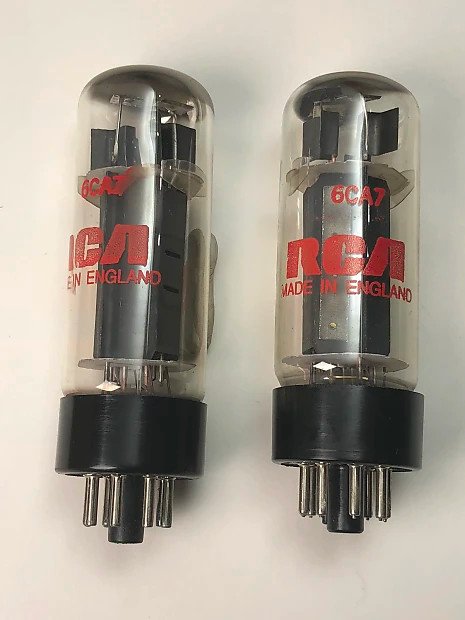My favorite of the RCA 12BH7 were the very earliest version with "winged" black plates. Late 1940s - early 50s. By "winged" plates it means each plate is asymmetric, with stapling/crimping on only one side. All later RCA 12BH7 had staples on both sides of each plate. These tubes were the lushest, most full-bodied, and organic of all - not just of RCA's variants, but of all 12BH7 makes I've tried. Unfortunately, they tend to be fairly noisy and microphonic. Good for driver slots in amps. Not good for preamps - though that's a common "feature" with all 12BH7.
As far as RCA black plates with the normal "ladder" plates (1950s) - they seem decent, but I also had bad luck picking up many worn-out tired tubes of this type. I might not have heard the best representation of this type, but still feel they ultimately lack winged-plates' magic. You get more of that 3D, "holographic" goodness with the winged plates.
The RCA gray ladder plate 12BH7 are solid tubes. Nice mildly warm sound - not as lush or magical as the winged black plates, but they do a good job and should be much easier to find in good condition.
My favorite 12BH7 of all is the Sylvania shiny black oval/curved plates, with D or square getters. I stopped using RCAs when I got these, but unfortunately they're much harder to find (especially if you need matched pairs or quads). Don't bother with later Sylvania gray plates of this type - they sound HORRIBLE by comparison (bright, with sterile midrange). Some sellers will advertise dark gray plates as "black plates" so you have to be careful. The Sylvania black plates have better detail, clarity, and dynamics that any RCA, but still have just enough sweetness in midrange to keep on the musical side of things. More neutral than RCAs. Tung-Sols look very similar to this build (probably got their plates from Sylvania) but with heat-sinks on the posts and slightly different mica spacers - these tubes have a brighter, leaner balance than neutral. Still good, but not AS good as the real Sylvanias.
Also have some Japanese curved-plate 12BH7 that are interesting just because they have gobs at dynamics and slam, but unfortunately at the expense of midrange sweetness and musicality / liquidity. Really "different" sounding tube!
Haven't tried any "pinched" plate variants, nor the Electro Harmonix modern version. As usual, massive re-branding and shared parts between manufacturers makes it harder to parse out what a tube actually is. I've had some Westinghouse tubes that look like the RCA winged-plates but don't sound as good.


